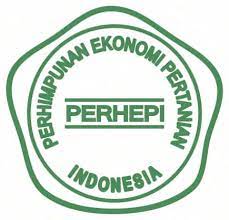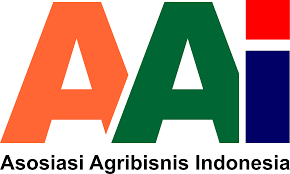Analisis Daya Saing Kelapa Sawit Di Kabupaten Kampar
Abstract
The research aimed to analyze the competitiveness condition (comparative advantage and competitive advantage) of oil palm plantation business in Kampar Regency and to create the strategy in terms of improving the competitiveness of oil palm fresh fruit bunch (FFB) in Kampar Regency.
The research was conducted in Kampar Regency Riau Province, where the research locations were in Bangkinang Sub-district, Tapung Hulu Sub-district, Siak Hulu Sub-district, Kampa Sub-district and Kampar Kiri Sub-district. The research location was determined by considering the area of oil palm production by observing the available data, the data analysis was conducted by using policy analysis matrix (PAM).
The result showed that oil palm agribusiness for 18 years in Kampar Regency has gained financial profit as much as Rp. 450,821,662 per hectare and the economic profit as much as Rp 437,941,556 per hectare, and internationally competitive, it was indicated by the ratio of domestic resource (DRC) with the value of 0.31. In addition, it was financially competitive, indicated from the value of Private Cost Ratio that was 0.11.
The combination impact of policy transfer from input and output tradable indicated that the effective protection coefficient (EPC) value of oil palm agribusiness was 1.04. The value depicted that overall not only the farmer but also the commodity system were protected with the value of 4%. In additon the value of profitability coefficient (PC) from oil palm agribusiness in Kampar Regency was 1.33. The value indicated the higher financial profit, it was 1.33 times more than the economic profit. Subsidy ratio to producers (SRP) which was the measurement of the combination of all occured transfer effects showed the value of 0.23 which meant the divergency between the financial profit and economic profi towards the oil palm agribusiness approximately around 23% from the gross profit.
The PCR value was smaller than DRC value, therefore the oil palm agribusiness in Kampar Regency is still in need of Goverment Intervention.
Keywords: Competitiveness, Oil Palm Commodity, Kampar Regency.
Downloads
References
Afrizal. 2013. “Analisis Daya Saing Usahatani Kelapa Sawit Kabupaten Mukomuko”. Tesis. Fakultas Pertanian. Program Pascasarjana Univeristas Bengkulu. Bengkulu.
Asrol, A., & Heriyanto, H. (2017). Daya Saing Ekspor Pala Indonesia di Pasar Internasional. Dinamika pertanian, 33(2), 61-70.
Rum, M. 2010. “Analisis Usahatani dan Evaluasi Kebijakan Pemerintah Terkait Komoditas Cabai Besar di Kabupaten Malang Dengan Menggunakan Policy Analysis Matrix (PAM)”. Volume 7 Nomor 2 (Hal. 138 – 143). Jurnal Agribisnis. Fakultas Pertanian. Univeristas Trunojoyo. Madura.
Astrawan, I K, 2011. “Analisis Daya Saing Komoditas Jambu Mete di Kabupaten Karang Asem Provinsi Bali Dengan Pendekatan Policy Analisysis Matrix”. Tesis. Program Pascasarjana Universitas Udayana. Denpasar.
Badan Pusat Statistik. 2019. Kampar Dalam Angka 2019. Badan Pusat Statistik Kabupaten Kampar. Kampar.
Badan Pusat Statistik. 2019. [PRODUK DOMESTIK REGIONAL BRUTO] - Distribusi PDRB Kabupaten Kampar Menurut Lapangan Usaha (Persen). Badan Pusat Statistik Kabupaten Kampar. Kampar.
Kominfo. Peta Wilayah. https://kominfosandi.kamparkab.go.id/peta-wilayah/. Kominfo Kabupaten Kampar. Kampar.
Direktorat Jenderal Perkebunan, 2020. Data Statistik Kelapa Sawit 2017 - 2019. Kementerian Pertanian Direktorat Jenderal Perkebunan, Jakarta.
Dinas Perkebunan. 2020. Data Statistik Dinas Perkebunan Kabupaten Kampar Tahun 2020. Kampar.
Arisman, 2002. Analisis Kebijakan Daya Saing CPO Indonesia. Volume 2, Nomor 1. September 2002. Jurnal Universitas Paramadina Jakarta.
Dinas Perkebunan Provinsi Riau, 2020. Data Statistik Dinas Perkebunan Provinsi Riau Tahun 2019. Pekanbaru.
Heriyanto, H., Asrol, A., & Wahyudy, H. A. (2020). Daya Saing Usahatani Pembesaran Ikan Lele Petani Pemodal Kecil di Kota Pekanbaru-Riau. Jurnal Ilmiah Pertanian, 17(1), 13-26.
Heriyanto, H. (2018). Indonesian Coconut Competitiveness In International Markets. Asia Proceedings of Social Sciences, 1(3), 46-50.
Karya, D., Heriyanto, H., & Asrol, A. (2019). Indonesian coconut competitiveness in international markets. International Journal of Recent Technology and Engineering, 8(2 Special Issue), 102-113. doi:10.31580/apss.v1i3.390.
Monke, E.A. and S.R. Pearson,1989. The Policy Analysis Matrix For Agricultur Development. Cornel University Press. Itaclia and London.
Monke, E.A. dan S.R. Pearson. 1995. The Policy Analysis Matrix for Agricultural Development. Cornell University Press. Ithaca and London. Edisi Revisi Tahun 2005. Jakarta: Penerbit Yayasan Obor Indonesia.
Wikipedia. 2016. https://id.wikipedia.org/wiki/Keunggulan_kompetitif.html (diakses tanggal 13 Juli 2020).
Aritonang, Indah. 2014. Teori Policy Analysis Matrix (PAM). http://indaharitonang-fakultaspertanianunpad.blogspot.com/2014/02/teori-policy-analysis-matrix-pam.html (diakses tanggal 18 Juli 2020)
Supriyono, Joko. 2017. Sejarah Kelapa Sawit Indonesia. https://gapki.id/news/3652/video-sejarah-kelapa-sawit-indonesia.html (diakses tanggal 29 Juni 2020)
Copyright (c) 2021 Jurnal Agribisnis

This work is licensed under a Creative Commons Attribution 4.0 International License.






















